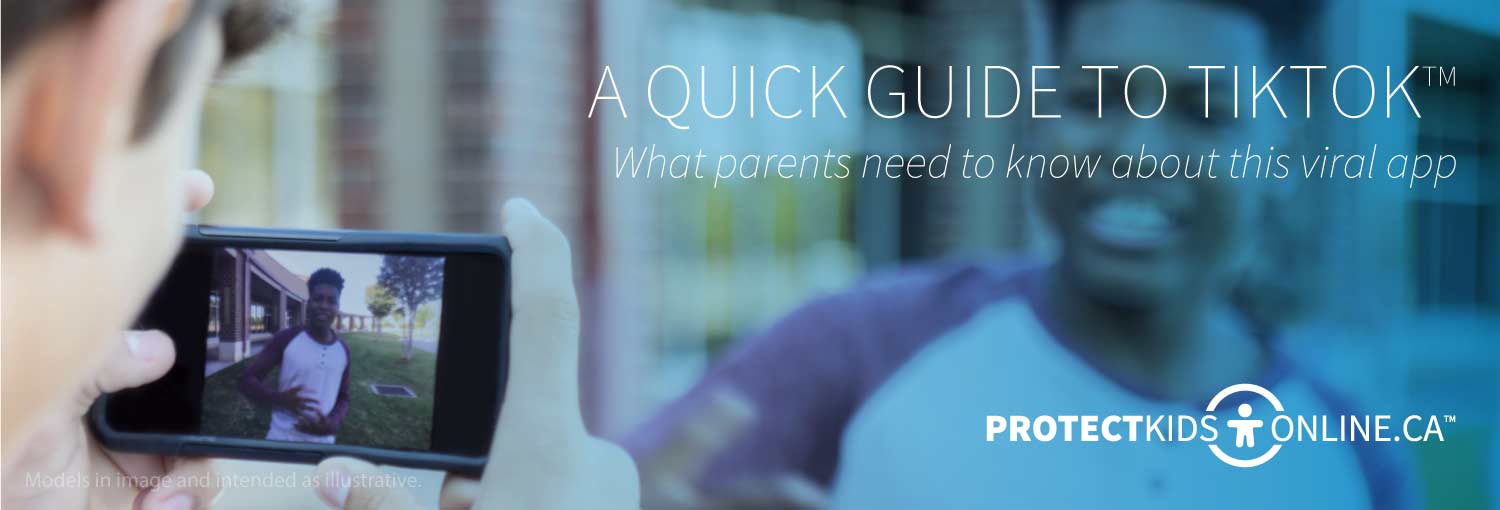A Quick Guide to TikTok™
What parents need to know about this viral app

Remember a time when teens just wanted to be YouTube® stars (which was probably only last year)? Now it’s all about making 60-second content on the SUPER popular app, TikTok, which has 700+ million daily active users.1
The short, sharable videos are mostly music driven — think lip-syncs, comedic duets, and dance routines — and can be a great opportunity for self-expression and creativity. However, like other video-sharing platforms, it can also expose teens to risks that range from viewing objectionable content to receiving messages from people they don’t know.

What is TikTok?
TikTok is a short-form, video-sharing app.
Users create and upload 60 or 15 second videos to their own page, but can also search for popular creators, categories (comedy, animals, sports), and hashtags to find videos to watch.
There is also a limited live-stream component.2 The option is currently only available in some test markets, but there are plans for a full rollout in the coming year.
TikTok is intended for users age 13 and over, however, it’s possible to bypass the app’s age verification by entering a false birthdate.3
If a birthdate is entered showing the user is under 13, they are directed to a separate section of the app which only lets tweens view curated videos, and users can’t comment, search, or post their own videos.

What are the Risks?
- Videos can contain mature content from explicit language, hyper-sexualized references, drugs and alcohol usage, and themes of self-harm.
- If profiles are public, anyone has the ability to comment on videos, which can lead to inappropriate or hurtful remarks.
- Teens may be tempted to take risks or act explicitly to get more followers or likes on a video. This can also be heightened by TikTok challenges, which are created by TikTok and the community itself.4 While most are just silly viral trends or marketing schemes, some can be dangerous. Earlier this year the #BrightEye challenge was spawned after a TikTok poster claimed if users put a bag of bleach to their eye it would change colour.5
- When signing up for TikTok, user profiles are made public by default.6 This means anyone can view videos that teens upload and can send direct messages to them.
- While users can disable the download video option so content can’t be saved by other users, this may not prevent this risk fully. Screenshots of videos can be captured and the videos themselves can be recorded using a separate program. Once saved by others, it can be easily misused to embarrass or exploit teens.

What Can Parents Do?
- Become familiar with TikTok. Under the app’s Safety Centre, there is a parent page which reviews privacy settings, how to report inappropriate content and behaviour, and other online safety resources. You can also review their top 10 safety tips.
- If your child is under the age of 13, they should not have a TikTok account as per the app’s Terms of Service. If your child is 13+, consider if they are developmentally in a position to understand risks/consequences and safeguard themselves while using the app.
- Help teens set up privacy settings. With a private account, users can approve or deny followers, restrict who can view their content, and limit incoming messages to followers only. Remind your teen to limit followers to people they know offline.
- However, even in private, users’ profile photo, username, and bio are still visible to all users on the platform. Discuss with teens that when creating their profile to refrain from wearing any identifying clothes (e.g., school uniform or sports team jersey) and select a user name without any personal information.
- Remind your teen that it is easy to lose control over what videos they post — even with the download button disabled.
- Explain if teens are ever threatened to make or share videos, they should stop talking to the person and let you know right away. Do not ever comply with such requests.
- Be emotionally available and keep the lines of communication open. It is important to remind your teen they can always come to you for help without fear of getting into trouble, and reinforce it’s never too late to ask for help.